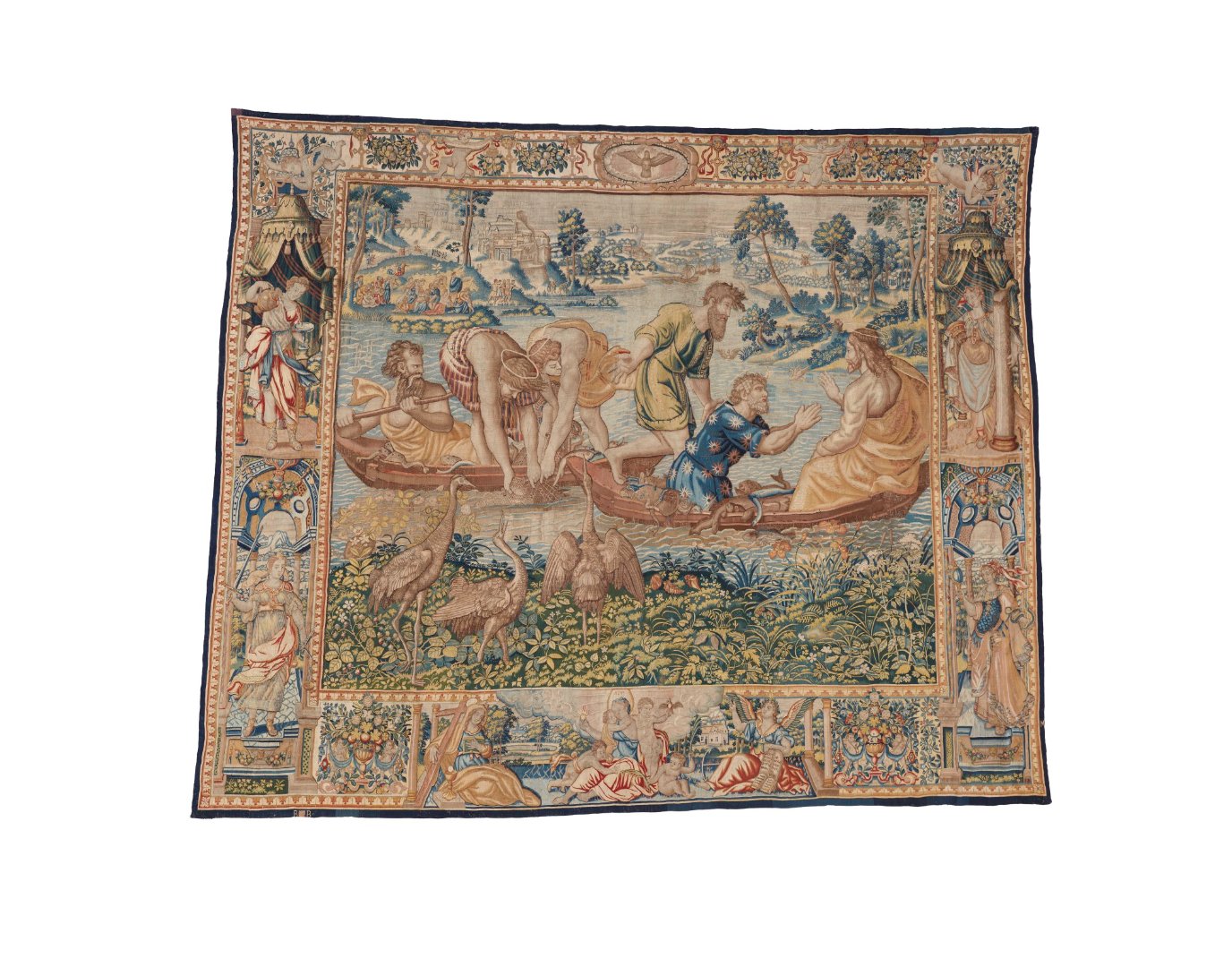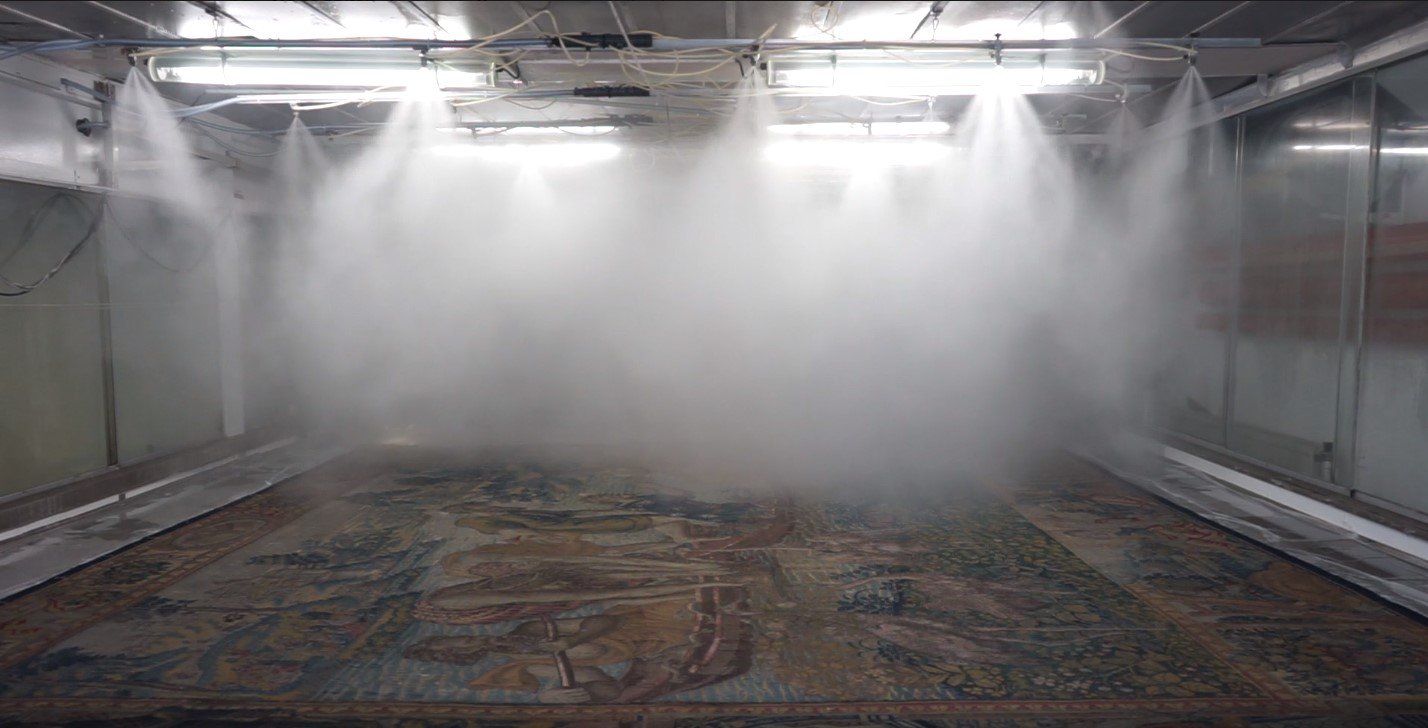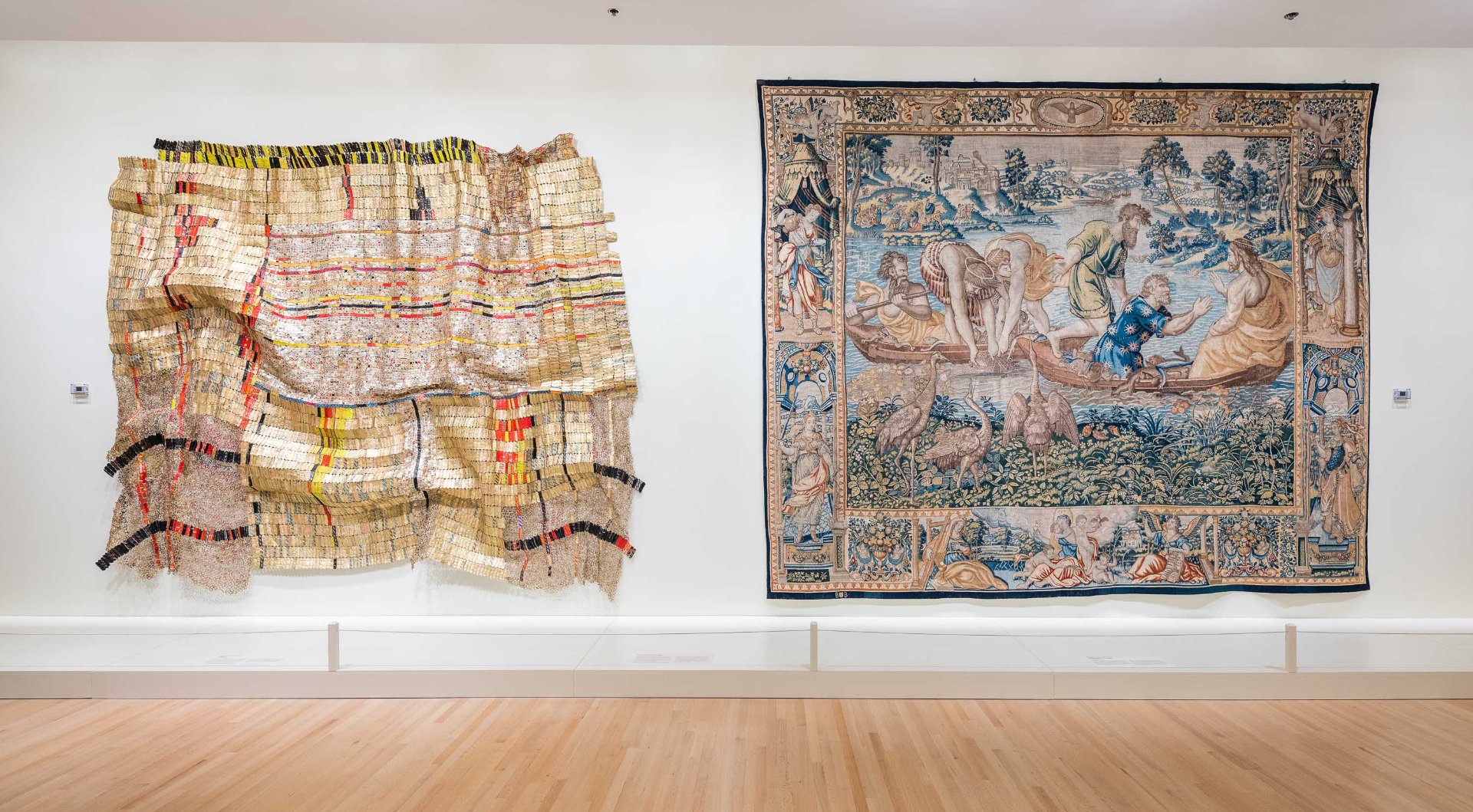Miraculous Journey of the Raphael Tapestry
Over ten years ago, The Miraculous Draught of Fishes tapestry was deemed too fragile to remain hanging above the limestone staircase in the original Clowes Pavilion inside the Indianapolis Museum of Art. The decision was made to remove it from the galleries, but unlike most artworks that are not on view, the tapestry didn’t quietly wait in storage; this artwork spent the last six years travelling across the world and being examined by experts.

Even though this tapestry was woven around 1630, it is based on a design created in the 1500s by the famous Renaissance artist Raphael. For this reason, along with the exceptional craftmanship of the weaving, this tapestry is considered an excellent example of the Italian High Renaissance and returning it to the Clowes Pavilion for the reopening was of highest importance.
To guarantee its future display, inhouse and outside experts began meeting regularly to examine every inch of the tapestry, both front and back, to determine what could be done (that’s a total of almost 33,000 square inches!). These examinations included over 100 pages of written reports and professional photography. The tapestry is so large that there is only one location in the Museum where the tapestry can be properly photographed—the stage in The Toby!
Once the condition of the tapestry was fully understood, the conservators teamed up with Newfields’ grant professional, and in 2019 Newfields was awarded a prestigious Bank of America Conservation Project Grant to fund the conservation of the tapestry. Additional research began immediately and working closely with the conservation scientists, the conservators began to figure out what dyes were used to color the wool and silk fibers. Scientific analysis revealed that the dyes used almost 400 years ago came from plants, such as madder, weld, and indigo.
After over two years of planning, it was decided that the tapestry would be sent to Belgium where it would be conserved at the renowned De Wit Royal Manufacturers of Tapestry. The artwork traveled by plane, and once it arrived in Belgium the conservators there examined and photographed the tapestry before beginning their conservation treatment. After careful study, the De Wit conservation team began cleaning the tapestry in a room designed specifically to clean extremely large textiles. First a cleaning solution was released as a fine spray from the ceiling and pulled through the tapestry into a vacuum table on which the tapestry rested. This low-risk cleaning technique is unique to De Wit Royal Manufacturers, and they are trusted with cleaning an average of 150 tapestries a year, mostly for museums.

Once the tapestry was cleaned, the De Wit conservators began the time-consuming process of hand sewing. This part of the treatment continued for over a year; it stabilized weak areas and improved the overall appearance of the tapestry. The Miraculous Draught of Fishes tapestry returned to Newfields in the summer of 2021 and is now on view in The Clowes Pavilion Reimagined. The tapestry is one of the first artworks guests see when they enter the restored Clowes Pavilion galleries. It hangs in optimal conditions, and is displayed in conversation with the contemporary artwork, Duvor (communal cloth) (2007) by Ghanaian artist El Anatsui.

In addition to the prestigious conservation grant, Newfields received a generous gift from The Clowes Fund, in honor of director emeritus William Marshall’s more than 30 years of service, which will permit long-term exhibition of this important tapestry.
EXHIBITION CREDITS:
The Clowes Pavilion Reimagined is made possible with support from Allen Whitehill Clowes Charitable Foundation and The Clowes Fund.
Funding for the conservation ofThe Miraculous Draught of Fishes was generously provided through a grant from the Bank of America Art Conservation Project. Additional funding for the conservation was provided by The Clowes Fund, in honor of longtime president of the Allen Whitehill Clowes Charitable Foundation, William Marshall.
IMAGE CREDITS:
Hendrick Mattens (Flemish), After Raphael, (Italian, 1483–1520), The Miraculous Draught of Fishes (tapestry), about 1630, wool, 162-1/4 × 195-1/4 in. Indianapolis Museum of Art at Newfields, The Clowes Collection, 2016.372.
Newfields staff photographing the tapestry before conservation treatment.
LEFT: El Anatsui (Ghanaian, b. 1944), Duvor (communal cloth), 2007, aluminum, copper wire, 13 × 17 ft. Indianapolis Museum of Art at Newfields, Ann M. Stack Fund for Contemporary Art, 2007.25 © El Anatsui.
RIGHT: Hendrick Mattens (Flemish), After Raphael, (Italian, 1483–1520), The Miraculous Draught of Fishes (tapestry), about 1630, wool, 162-1/4 × 195-1/4 in. Indianapolis Museum of Art at Newfields, The Clowes Collection, 2016.372.
After extensive testing for dye stability the tapestry was cleaned using aerosol suction. Image courtesy of De Wit Royal Manufacturers, Belgium.
Two conservators at De Wit Royal Manufacturers of Tapestry stabilizing weak areas of the tapestry with hand stitched repairs. Image courtesy of De Wit Royal Manufacturers, Belgium.





